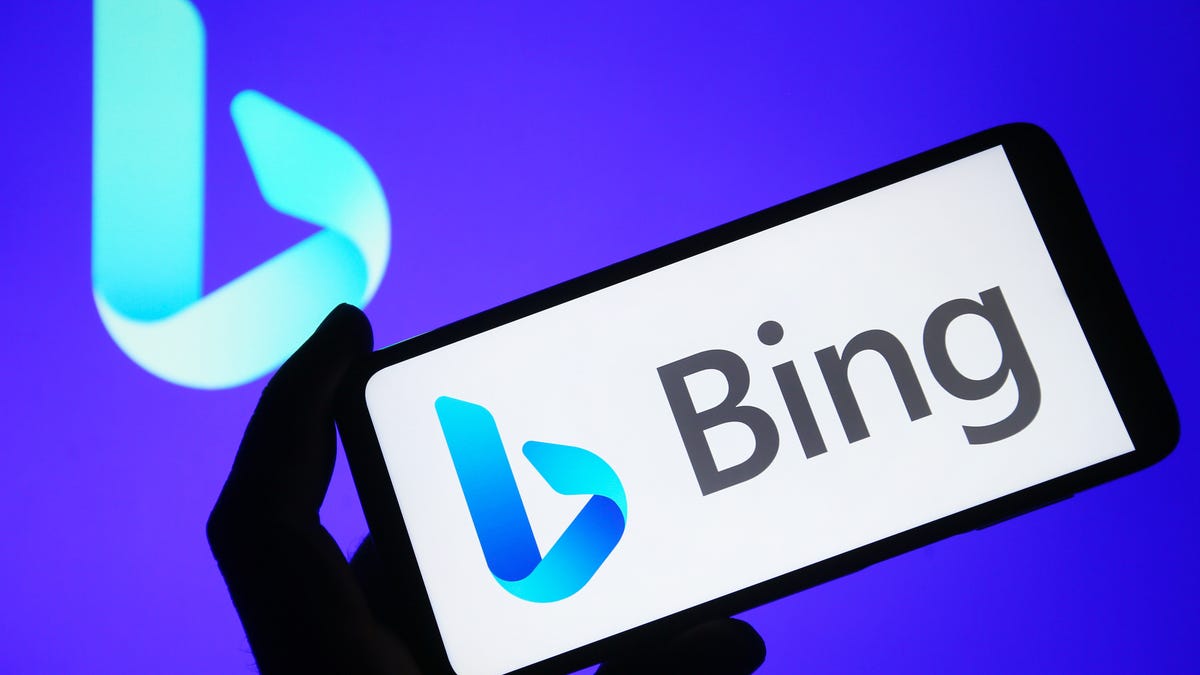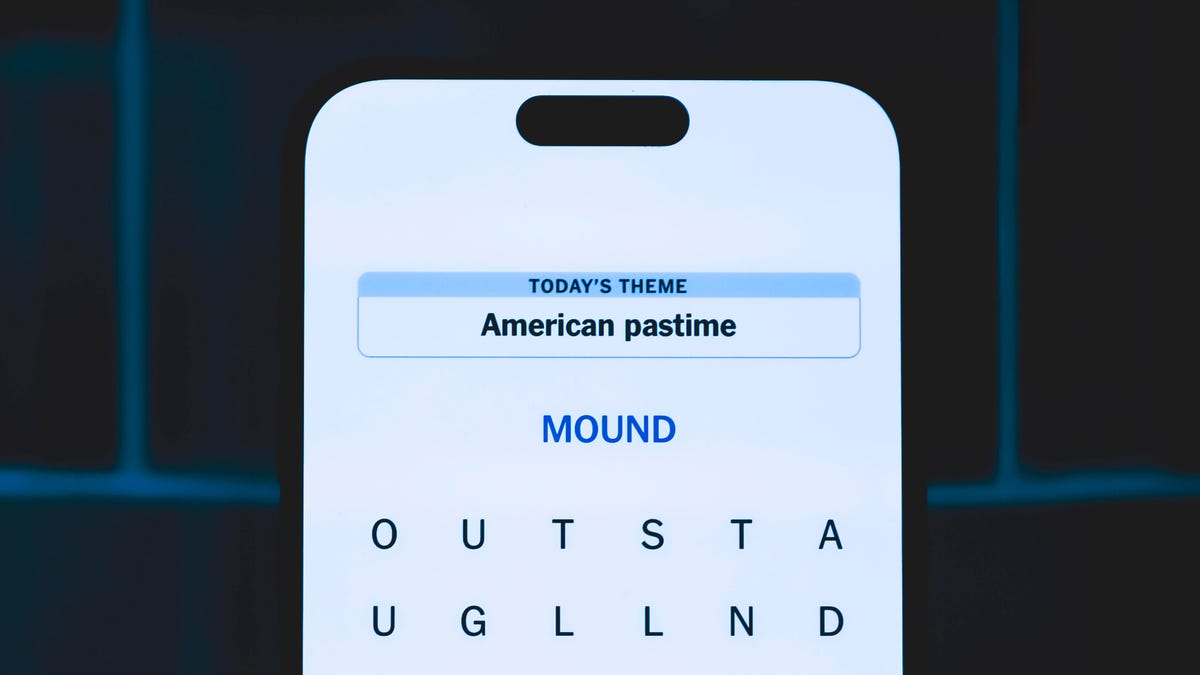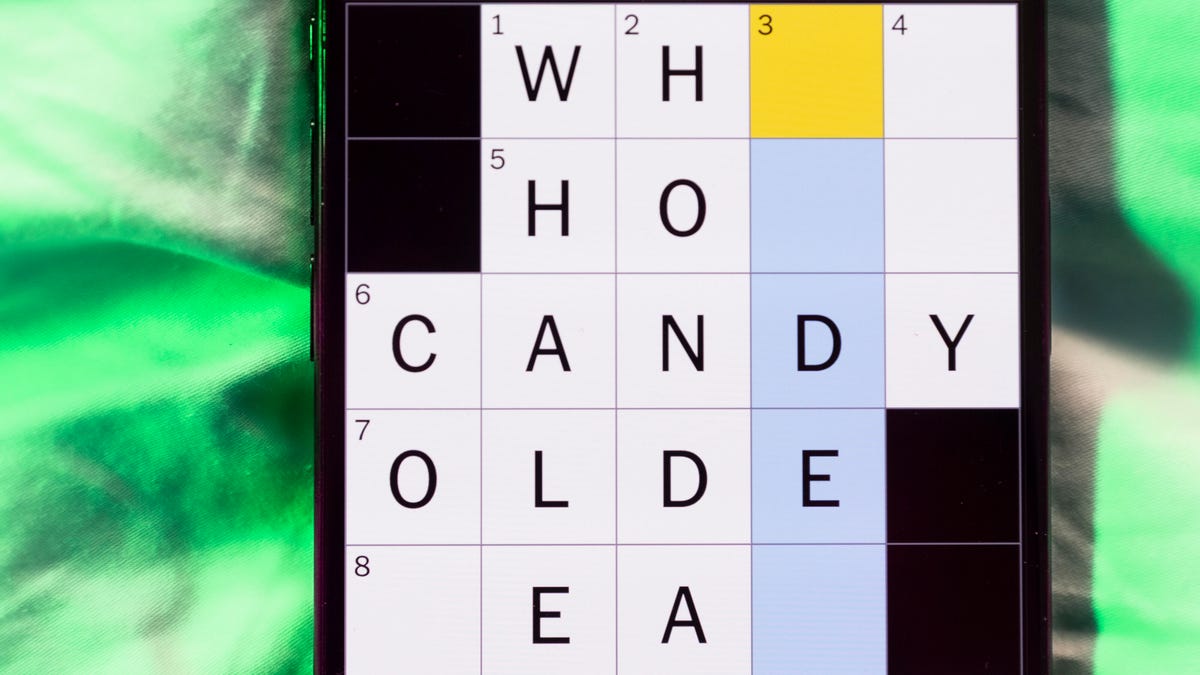Technologies
Microsoft Bing AI Chat Widgets: How to Get Them on iOS and Android
SwiftKey now also has the capacity to compose text for you using AI.

Microsoft launched artificial intelligence-powered search on Bing 100 days ago, celebrating the milestone with a few updates to the system this week. One of those is adding a chatbot widget for phone screens across both iOS and Android.
«We’re launching a new Bing Chat widget,» Microsoft said in a blog post Tuesday. «Soon, you’ll be able to click the Bing icon to land directly in the new Bing Chat experience, or click the microphone icon to verbally ask a question.»
Microsoft in February unveiled Bing search powered by the large language tech behind ChatGPT, calling its search engine an «AI-powered co-pilot for the web.» Search results began incorporating info from OpenAI as well as Bing adding a chat window to help you with things like making shopping lists, summarizing PDFs, generating LinkedIn posts and giving advice to your queries.
The Bing AI chatbot was opened to everyone with a Microsoft account in early May, though it was limited to the Edge browser on computers, phones and tablets and the Bing app. From this week, you’ll be able to use Bing AI chat without a Microsoft account, though you’ll be limited to just five chat turns per session (signing in gives you 20 turns with the chatbot).
Tuesday’s news means it’s now available as a widget, too.
Microsoft also announced it has brought AI-powered Bing to the Compose feature in the SwiftKey keyboard, «which will now draft text for you according to the parameters you suggest — not just the subject matter but also the message tone, format and length.»
It’s additionally improved the quality of chats in other languages than English and added the ability to continue your chatbot conversation between your mobile device and your desktop.
How to add the Bing widget to your Android phone
- Download the Bing Chat app.
- On your home screen, touch and hold on an empty space until your home screen zooms out.
- Tap Widgets.
- Scroll through the list or use the search function to find the Bing AI chat widget.
- Touch and hold on the widget.
- Slide it to where you want to place it on the Home screen.
- Lift your finger, and the widget will be in place.
How to add the Bing widget to your iPhone
- Download the Bing Chat app.
- On your home screen, touch and hold an empty space until your apps jiggle.
- Tap the add (+) button, located in the upper left corner.
- Select the Bing AI chat widget.
- Choose the size you want the widget to be.
- Tap Add Widget.
- Tap Done.
After Microsoft introduced the Bing AI chatbot in February, rival Google followed with AI Bard in March. CNET has broken down ChatGPT as well as Bing and Google Bard to work out which is the most helpful chatbot.
Editors’ note: CNET is using an AI engine to create some personal finance explainers that are edited and fact-checked by our editors. For more, see this post.
Technologies
Today’s NYT Strands Hints, Answers and Help for Dec. 5 #642
Here are hints and answers for the NYT Strands puzzle for Dec. 5, No. 642.

Looking for the most recent Strands answer? Click here for our daily Strands hints, as well as our daily answers and hints for The New York Times Mini Crossword, Wordle, Connections and Connections: Sports Edition puzzles.
Today’s NYT Strands puzzle is a fun one, and the theme is interesting. Some of the answers are difficult to unscramble, so if you need hints and answers, read on.
I go into depth about the rules for Strands in this story.
If you’re looking for today’s Wordle, Connections and Mini Crossword answers, you can visit CNET’s NYT puzzle hints page.
Read more: NYT Connections Turns 1: These Are the 5 Toughest Puzzles So Far
Hint for today’s Strands puzzle
Today’s Strands theme is: Feeling peckish?
If that doesn’t help you, here’s a clue: Can I see a menu?
Clue words to unlock in-game hints
Your goal is to find hidden words that fit the puzzle’s theme. If you’re stuck, find any words you can. Every time you find three words of four letters or more, Strands will reveal one of the theme words. These are the words I used to get those hints but any words of four or more letters that you find will work:
- BAKE, BAKER, BONE, BONES, SIRS, FUNS, FACT, BUTT, DIET, DIETS, GREW, STEW, GOUT, DINE, NEST, NETS, TEAK
Answers for today’s Strands puzzle
These are the answers that tie into the theme. The goal of the puzzle is to find them all, including the spangram, a theme word that reaches from one side of the puzzle to the other. When you have all of them (I originally thought there were always eight but learned that the number can vary), every letter on the board will be used. Here are the nonspangram answers:
- BAKERY, CAFE, BISTRO, BUFFET, BREWERY, STEAKHOUSE
Today’s Strands spangram
Today’s Strands spangram is DININGOUT. To find it, start with the D that is three letters to the right on the top row, and wind down.
Don’t miss any of our unbiased tech content and lab-based reviews. Add CNET as a preferred Google source.
Technologies
Today’s NYT Mini Crossword Answers for Friday, Dec. 5
Here are the answers for The New York Times Mini Crossword for Dec. 5.

Looking for the most recent Mini Crossword answer? Click here for today’s Mini Crossword hints, as well as our daily answers and hints for The New York Times Wordle, Strands, Connections and Connections: Sports Edition puzzles.
Need some help with today’s Mini Crossword? Three of the clues involve a now-infamous Gen Z/Gen Alpha joke, so you might want to have a young person nearby. Read on. And if you could use some hints and guidance for daily solving, check out our Mini Crossword tips.
If you’re looking for today’s Wordle, Connections, Connections: Sports Edition and Strands answers, you can visit CNET’s NYT puzzle hints page.
Read more: Tips and Tricks for Solving The New York Times Mini Crossword
Let’s get to those Mini Crossword clues and answers.
Mini across clues and answers
1A clue: Beaver’s building project
Answer: DAM
4A clue: Unit of distance originally equivalent to 1,000 paces
Answer: MILE
5A clue: Number of dwarfs or deadly sins
Answer: SEVEN
6A clue: Extra-large film format
Answer: IMAX
7A clue: Crosses (out)
Answer: XES
Mini down clues and answers
1D clue: Difficult-to-work-with stars
Answer: DIVAS
2D clue: U.S. soccer star ___ Morgan
Answer: ALEX
3D clue: Roughly half of the adult population
Answer: MEN
4D clue: 5-Down-5-Across, for one
Answer: MEME
5D clue: Broadway musical about the wives of Henry VIII
Answer: SIX
Don’t miss any of our unbiased tech content and lab-based reviews. Add CNET as a preferred Google source.
Technologies
The Mystery of the iPhone 17 Pro’s Missing Night Mode for Portraits
Is it a bug? Is it a technical issue? Or did Apple just yank a camera feature that wasn’t popular?

It’s a mystery. Night mode isn’t available in Portrait Mode on the iPhone 17 Pro, and no one seems to know why. Yet.
Night mode automatically brightens photos and captures more details, even in low-light conditions. You can adjust the exposure time manually. In Portrait mode, the camera focuses sharply on the subject you’re snapping and blurs the background, creating a depth-of-field effect.
The first clue that Night mode for Portrait mode was gone came from an Apple support document titled Take Night mode photos with your iPhone camera. It states what many iPhone aficionados already know: «Night mode automatically brightens photos and captures more detail in low light.»
Don’t miss any of our unbiased tech content and lab-based reviews. Add CNET as a preferred Google source.
Night mode for the iPhone 17 Pro is listed in two separate parts of the iPhone online user guide (here and also here) for selfies and time-lapse photos. But it isn’t included on the guide’s list for snapping Night mode photos in Portrait mode. The feature is still available on iPhone Pro and Pro Max on the 12, 13, 14, 15 and 16 series.
Upon investigation, CNET staffers verified that, indeed, Night mode is no longer an option in Portrait mode with the iPhone 17 Pro.
An Apple representative didn’t immediately respond to a request for comment.
When the iPhone 17 Pro was launched in September, Andrew Lanxon, CNET’s lead photographer in Europe, was impressed by the camera upgrades over the iPhone 16 Pro, including optical zoom that doubled to 8x, a telephoto camera sensor 56% larger than before and 48 megapixels of resolution.
Lanxon, a professional photographer and YouTuber, was excited to get shooting with the iPhone 17 Pro. But apparently, he will have to do without Night mode in Portrait mode.
Why did Apple do it?
Why was Night mode removed? «There doesn’t appear to be a hardware reason for it,» said CNET senior writer Jeff Carlson. «The Lidar camera that helps with low-light focusing and depth perception is still there. Perhaps it’s a software issue, but as of the iOS 26.2 release candidate, the feature isn’t present.»
Carlson found it curious that it’s taken three months since the launch of the new pro model before people noticed that it’s missing. He speculates that the feature was possibly removed because it «wasn’t being used and Apple could devote other processing resources elsewhere,» he said. «Perhaps something broke in the development of the new operating system and revamped Camera app, and it hasn’t been a high enough priority to fix in the regular release schedule.
«People have gotten used to having iPhone models that enable shots that are otherwise difficult for smartphone cameras, especially on a flagship like the iPhone 17 Pro,» Carlson said. «I hope the feature returns to give everyone the most control over the photos they capture.»
One parallel might be what Samsung did earlier this year — removing S Pen Bluetooth connectivity on the new S25 Ultra. Samsung said they removed the feature because not many people were using it. Is Apple doing the same thing with Night mode for portraits?
Some people miss it, some don’t
A subreddit on the topic appeared to be a mix of «who cares» and «oh darn.» Redditor kaoss_pad was «low key happy» that the feature had vanished, saying that «it would often surprise me and activate when I didn’t want it and ruin a moment.»
Some Redditors weren’t even aware of the feature. CultofCedar posted, «lol didn’t even notice that wasn’t a thing,» and Successful-Cover5433 wrote, «I didn’t even know you could.»
A couple of folks weren’t happy about the mysterious disappearance, including nsfdrag, who posted, «Kind of a bummer, I like the feature.»
-

 Technologies3 года ago
Technologies3 года agoTech Companies Need to Be Held Accountable for Security, Experts Say
-

 Technologies3 года ago
Technologies3 года agoBest Handheld Game Console in 2023
-

 Technologies3 года ago
Technologies3 года agoTighten Up Your VR Game With the Best Head Straps for Quest 2
-

 Technologies4 года ago
Technologies4 года agoBlack Friday 2021: The best deals on TVs, headphones, kitchenware, and more
-

 Technologies4 года ago
Technologies4 года agoVerum, Wickr and Threema: next generation secured messengers
-

 Technologies4 года ago
Technologies4 года agoGoogle to require vaccinations as Silicon Valley rethinks return-to-office policies
-

 Technologies4 года ago
Technologies4 года agoOlivia Harlan Dekker for Verum Messenger
-

 Technologies4 года ago
Technologies4 года agoiPhone 13 event: How to watch Apple’s big announcement tomorrow
